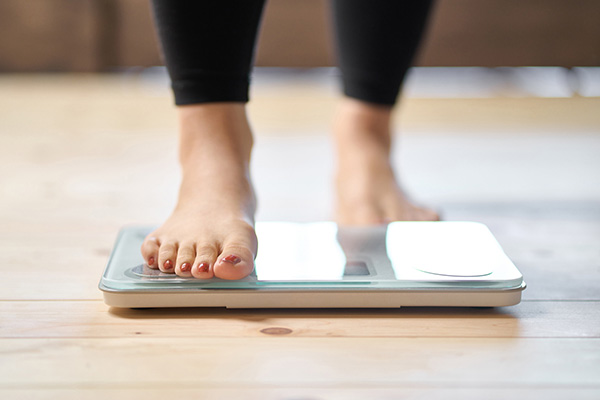Most women diet, but most diets don’t work - Here’s why
Weight loss in America was reinvented by Ozempic. What looked hopeless now glimmers with promise. The stampede for GLP-1 RA drugs has transformed the industry too. Sales of Ozempic in the US soared past $70 billion last year. Most users are women – especially younger women.
But Ozempic is just the latest drug for a health crisis in which we’ve seen 27 successive “miracle weight loss drugs” withdrawn by the FDA within a few years after their launch due to adverse side effects. Why should we expect Ozempic and the other new GLP-1 RA drugs to be any different – except that we so want them to be?
In fact, all of America wants Ozempic and its kin to be that miracle. The media are full of celebrities who tout their dramatic weight loss. But it’s no surprise their stories aren’t real life. The early data show that:
- Most women who take Ozempic and related drugs do not achieve transformative weight loss
- Most have stopped taking the drug within a year after starting
- Most experience significant side effects
- Few can afford to pay for the drugs out of pocket
- And it seems that everyone regains the weight soon after stopping the drugs
That’s neither a miracle nor an easy undertaking.

The View at WHN
At WHN we want every woman to find her healthy weight. We believe that can take months – and that’s good. There may be a role of GLP-1 RA drugs that is helpful for some, especially in short-term use. We don’t think that for most women obesity is a disease or that everyone needs to stay on Ozempic forever. But every woman needs to understand why she gained those extra pounds, how her body has changed as her weight grew, and what changes will make her healthy again.
The celebrity doctors and companies promoting crash diets are not just wrong – they’re actually hurting women. Instead of believing their claims, we want you to slow down and understand how your body works. Then you’ll know what to do.
Let’s reinvent weight loss in a way that works with your body, and gives you health in the end, not just a drug-fueled illusion. Here’s what we’ll cover in the sections that follow:
- The WHN Weight Manifesto
- The Biology of Weight Gain & Loss
- The BioType Weight Quiz
- The WHN Biological Diet
- Why Crash Diets Can’t Work
- The Madness of Weight Culture in America (Shed That Too!)
The WHN Weight Manifesto
Please put aside all the conventional thinking you’ve been coached into over the years by the weight loss industry and our culture. Replace those ideas with these:
1. Plump is better than skinny. That slender ideal in fashion magazines and movies – and Barbie and most other body-morphic icons – is nearly impossible. Those women are medically malnourished. The evidence is conclusive that being plump – a BMI of 25-29 – is far healthier than being underweight. The impossible skinny ideal is only useful to the $400 billion worldwide weight-loss industry. So aim for healthy weight – not skinny.
2. Take years to lose weight. Crash diets don’t work; the average woman over 50 has tried over 50 diets that failed. And they can’t work, because they fight against your biology, which is unchangeable. It took you years to gain weight, and it may take years to lose it. That’s OK. You’ll win in the end.
3. We’re all emotional eaters – let’s make that work for us. It’s just as neurotic to always deny yourself food as it is to stuff yourself or practice binge-and-purge. We need to figure out the emotional needs our eating habits express and find healthier ways to meet those needs.
4. Fad diets are fashion, not science. In your lifetime there have been hundreds of crackpot ideas about how to lose weight. They’re dumb, ineffective, and often dangerous. Weight loss is actually simple. (Take note if you find that disappointing!)
5. Your doctor probably isn’t a good guide to weight loss. Very few had much training in nutrition or hormones. Most are specialists in other subjects. Most are biased toward drug therapies, and have supported many of the 26 weight loss drugs the FDA has withdrawn due to dangerous side effects in the last 75 years. Most don’t have the time to advise you. Very few think you will make changes in your life that they recommend, anyway. You’ll need to become your own expert and authority.
6. Modern life is not your friend. Fast food, industrial food, restaurant culture, chronic stress, environmental chemicals, food additives, sedentary habits, most chronic disease, and a host of other elements of modern life contribute to weight gain. Did you know that your natural GLP-1 is drained by these same factors, including prescription drugs? You will have to make changes, but the ones that aren’t so difficult will transform your health.
7. Your body is in charge; you play a support role. We become overweight as a result of derailing our body’s self-regulatory mechanisms over a period of years. Your role is to make the changes necessary to restore the healthy function of its self-regulatory mechanisms and thereby allow your body to give up that weight. It’s a set of basic health practices paired with solutions to the self-regulatory issues, done in priority order that’s personalized to you via online quizzes. The pounds will fall away. We’ll show you how.
8. Health is the goal, not weight loss. Being overweight increases your risks of dozens of adverse outcomes, from heart disease and cancer to diabetes and Alzheimer’s, from knee and hip replacements to chronic pain and autoimmune disease. Getting to a healthy weight in a healthy way is about your life, not your dress size.
The Biology of Weight Gain and Loss
Excess weight is a chronic health problem but not a true disease. And like most chronic health problems, it takes years to develop. Most of us follow one of these patterns:
Overweight since childhood
- Commonly a family pattern between parents and/or among siblings
- Genetic and behavioral factors combine, such as excessive eating and inactivity
Turning-point weight gain, in which the pounds come on suddenly, most often due to:
- Puberty/menarche (first period)
- Young adulthood – the famous “freshman 15”
- Pregnancy/post-partum
- Perimenopause/menopause – which can start in your 30’s
- Adverse life events – divorce, death of a loved one, depression, etc.
Progressive weight gain year after year
- Often a “side effect” of putting others first – family or work
- 2-3 lbs of weight gain a year is typical, especially around holidays
Contrary to the arguments of the weight loss industry, there are many biological vectors behind long-term weight gain, and they’re interrelated:
- Hormonal
- Metabolic
- Neurological
- Musculoskeletal
- Behavioral
- Genetics & Epigenetics
Like lines in a painting that all converge on the horizon, your path to excess weight will start out in a highly personalized pattern, but the longer you suffer with excess weight, the more your body will resemble the mature form of the condition, which is characterized by:
- Hormonal: Confused endocrine signaling and even glandular damage
- Metabolic: Slow metabolism, digestive dysbiosis and chronic inflammation
- Neurological: Impaired neurotransmitter function, even depression or mood disorders
- Musculoskeletal: Loss of muscle mass (sarcopenia) and joint damage
- Behavioral: Disordered eating, sedentary habits and chronic inactivity
- Genetics: Changes in genetic expression
This model of weight gain may seem complex, even daunting – but it’s actually the antidote to the messaging of the weight loss industry and the secret to achieving your healthy weight. When you see how you got the excess weight, you see how to take it off. And that’s not a magic makeover: it’s a gradual process of unwinding the factors that led to being overweight.
Getting to your healthy weight is a journey. The first step is to identify your priority: what do you fix first?
The biology of weight gain is complex, but in trying to determine our leading weight loss obstacle, almost all of us find ourselves in one of six categories:
#1 GLP-1 Support Weak GLP-1 production or sensitivity
#2 Thyroid Imbalance Impaired thyroid function
#3 Blood Sugar Imbalance Elevated blood sugar levels/impaired insulin function
#4 Adrenal Imbalance Chronic stress/excess cortisol
#5 Hormonal Imbalance Sex hormone imbalance
#6 Metabolic Imbalance Slow and/or weak metabolism
Take the WHN BioType Weight Quiz to determine your current profile. You may fit strongly into one category, or have symptoms across two or more; the quiz logic will recommend where to start.
The WHN Biological Diet
It’s rare that your diet alone causes weight gain – or weight loss. It’s just a healthy diet makes makes weight loss possible.
By “diet” we don’t mean restricting calories or portion control. This is the old approach to weight loss that has been discredited by modern science. By “diet” we mean:
- What foods you eat
- How you prepare your food
- When & how you eat
Our foods are the foundation of our digestion… the right food creates the right balance of intestinal bacteria… and the right bacteria are the foundation of our metabolism, neurotransmitter function, and hormonal balance.
Why Crash Diets Can’t Work
The weight loss industry is enormous – hundreds of billions of dollars every year. And to be frank, with this much money at stake, we shouldn’t be surprised that it’s filled with dishonesty, corruption and deceit. Of course, there are honest people and companies involved, but they aren’t often in the spotlight.
Crash diets are the backbone of this industry, and the average woman of a certain age has tried dozens of them. Why? Because they all fail. You may lose some pounds, but you put them back on. The cycle of effort and failure is repeated endlessly.
And why do all crash diets fail? Because the fight against your body’s biology. If you don’t change that biology you can’t achieve a healthy weight. That’s why we call our nutrition plan “The WHN Biological Diet”.
It’s best if you just stop thinking you’re the problem. The weight loss industry has conditioned you to blame yourself. That keeps you coming back for more. Better to “un-brainwash” yourself.
The Madness of Weight Culture
At WHN we think of “weight loss” as a kind of historical, intergenerational trauma for American women. How else can we begin to unravel this madness:
- Measuring health by slimness, though dieting may cause as much damage as obesity
- Trying dozens of crash diets, though our biology keeps crash diets from working
- Conditioning even normal-weight young girls to consider themselves overweight
- Debating whether obesity is a disease, even as we support the industry of weight loss
- Idealizing a slender silhouette that only a tiny percentage of women can humanly achieve
- The disordered eating that affects up to 40% of women vs the body-positivity movement
- The obsession with extreme exercise and meal skipping, especially among younger women
- The body-shaming that is rampant on social media and destroys women’s self-esteem
In this context, it’s no wonder that Ozempic has touched off such a stampede of attention and demand. The pharmaceutical companies behind semaglutide and other GLP-1 Receptor Agonist drugs are promising transformative weight loss that is effortless. The claims that Ozempic cures all other compulsions and addictions seems like a logical bonus.
Of course, excess weight is a genuine health problem. We can favor healthy weight, and acceptance of body diversity, while being realistic about the damaging effects of excess weight.
Your Personal Journey to Healthy Weight: Change Your Future
The old saying is that “every journey begins with a single step”. You have to choose yours, and then begin. Here are your options:
- Take the WHN BioType Weight Quiz
- Start the recommended supplement combo
- Study the WHN Biological Diet and gradually adopt it
- Read about the biology of weight gain and loss and the key issues involved.
- Subscribe to our newsletters on women’s health
- If you want insight into your personal situation, call one of our Advisors toll-free at 1-800-448-4919













